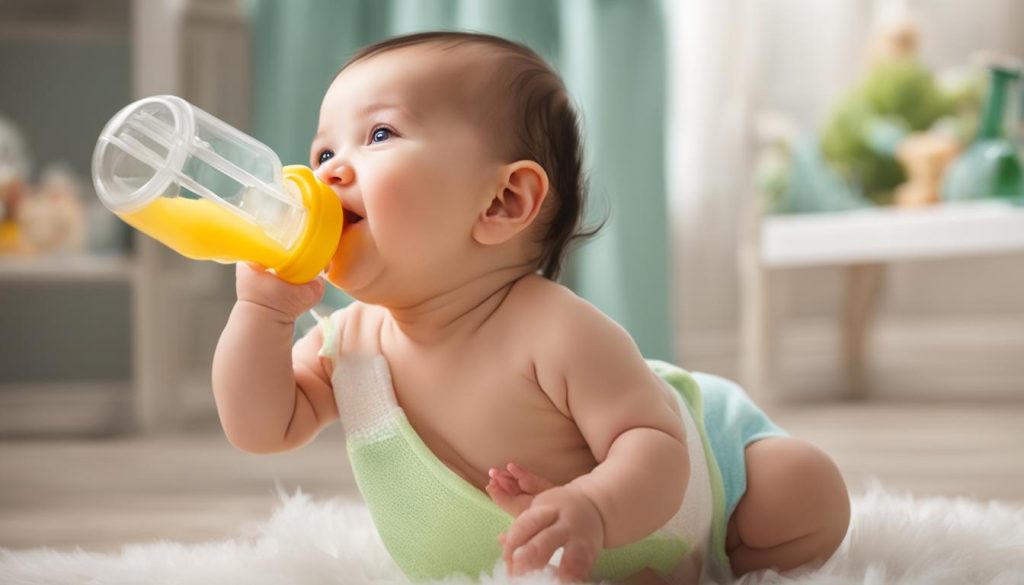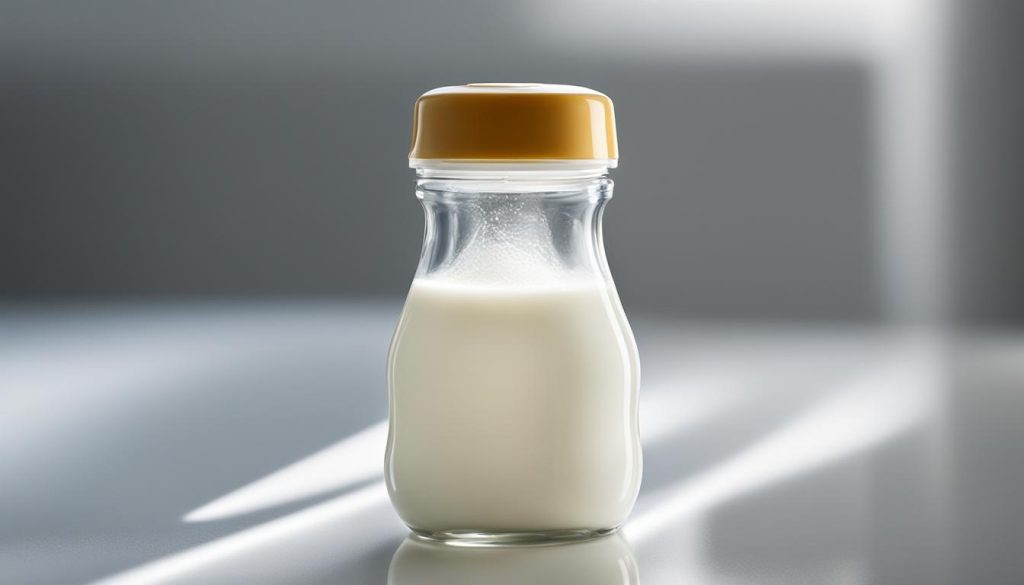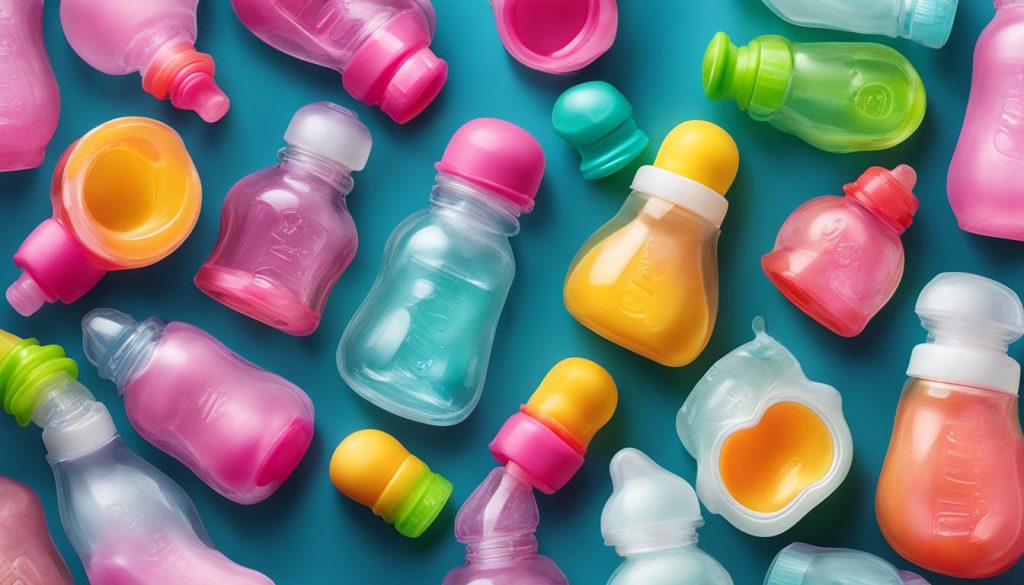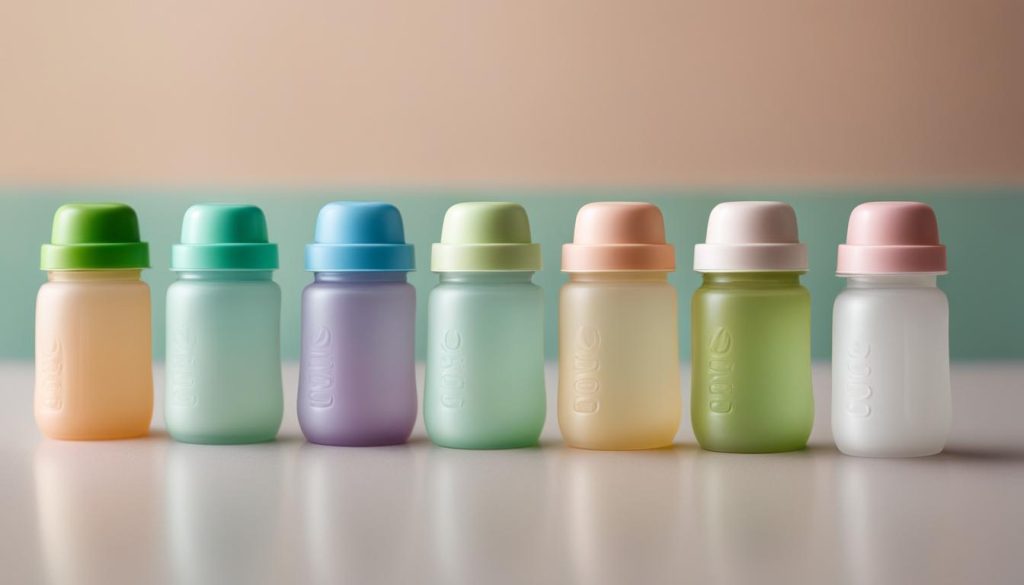Feeding your baby is no easy task, especially when dealing with leaky bottles. However, there are baby bottles available on the market that are designed to be leak-proof and prevent any spills or drips. These bottles ensure stress-free feeding for both you and your baby, allowing you to focus on nourishing your little one without worrying about messes. In this article, we’ll explore the best baby bottles that don’t leak, providing you with reliable and hassle-free solutions for feeding time.
When it comes to choosing a baby bottle, one of the factors to consider is the material used. There are several options available, including glass, plastic, and silicone baby bottles. Glass bottles are durable and free from chemicals, but they can be heavier and more prone to breaking. Plastic bottles are lightweight and difficult to crack, but some parents have concerns about chemicals that may leach from them. Silicone bottles offer a soft and squishy texture, making them easy for babies to hold, but they may not be as stable on surfaces. Each material has its pros and cons, and it’s important to choose one that meets your preferences and needs.
Types of Baby Bottles: Comparing Materials
When it comes to choosing a baby bottle, it’s essential to consider the different materials available. The three main types of baby bottles are glass, plastic, and silicone. Each material has its own unique characteristics and benefits, allowing you to find the perfect option for your baby’s needs.
Glass baby bottles are known for their durability and safety. They are made from thermal shock-resistant glass, which means they can withstand high temperatures without breaking. Glass bottles are also free from harmful chemicals such as BPA, PVC, and phthalates, making them a popular choice for parents who prioritize safety. However, it’s important to note that glass bottles can be heavier and more fragile compared to other materials.
Plastic baby bottles are lightweight and durable, making them a convenient option for on-the-go parents. They are often made from polypropylene or polyethylene, which are considered safe materials for baby bottles. However, some parents have concerns about the potential for chemicals to leach from the plastic, especially when exposed to heat or repeated use. It’s important to choose BPA-free bottles and follow proper cleaning and sterilization guidelines to minimize any risks.
Silicone baby bottles offer a soft and flexible alternative to traditional materials. The silicone material is gentle on your baby’s gums and teeth, making it suitable for infants who are teething or have sensitive mouths. Silicone bottles are also lightweight, easy to clean, and often collapsible for convenient storage. However, it’s worth noting that silicone bottles may not be as stable when placed on surfaces due to their flexible nature.
“When choosing a baby bottle, it’s important to consider the material that best suits your baby’s needs and your priorities as a parent. Glass bottles provide a safe and durable option, while plastic bottles offer convenience and durability. Silicone bottles are a great choice for babies with sensitive mouths. Ultimately, the decision comes down to what works best for you and your baby.”
Table: Comparison of Baby Bottle Materials
| Material | Pros | Cons |
|---|---|---|
| Glass | Durable, chemical-free, safe | Heavier, prone to breaking |
| Plastic | Lightweight, convenient, durable | Potential chemical leaching |
| Silicone | Soft, flexible, easy to clean | Less stable on surfaces |
As you explore the various options available, consider your baby’s preferences, your lifestyle, and any specific concerns you may have. It’s important to select a baby bottle that provides a safe, comfortable, and convenient feeding experience for both you and your little one.
Importance of Leak-Proof Baby Bottles in Infant Feeding
Leak-proof baby bottles are more than just a convenience; they play a crucial role in infant feeding for several important reasons. Firstly, these bottles ensure that the milk or formula remains contained within the bottle, significantly reducing the risk of spills, messes, and wasted food. Whether you’re feeding your baby on-the-go or during nighttime feedings, leak-proof bottles provide peace of mind and minimize disruptions.
In addition to preventing spills, leak-proof bottles also prevent air from entering the nipple. This is important as excessive air intake can cause discomfort for your baby, leading to gas and colic. By using bottles that are designed to be leak-proof, you can help reduce the risk of your baby swallowing excessive amounts of air, promoting a more comfortable feeding experience.
Furthermore, leak-proof baby bottles provide a more secure and comfortable feeding experience for your baby. These bottles allow your baby to focus on feeding without interruptions or frustrations caused by leaks or spills. It ensures uninterrupted and efficient feeding, promoting better digestion and a more enjoyable feeding experience for both you and your little one.
The Benefits of Non-Leaking Baby Bottles
Using leak-proof baby bottles offers several benefits, including:
- No mess: Leak-proof bottles significantly reduce the chances of spills and messes, making feeding time cleaner and more convenient.
- Minimal waste: With leak-proof bottles, you can be confident that the milk or formula you prepare is safely contained within the bottle, reducing waste and ensuring that your baby receives the full amount of nourishment.
- Comfortable feeding: Leak-proof bottles provide a more secure and comfortable feeding experience for your baby, allowing them to focus on feeding without interruptions or frustrations caused by leaks or spills.
- Reduced gas and colic: By preventing excessive air intake, leak-proof bottles help reduce the risk of gas and colic in babies, promoting better digestion and minimizing discomfort.
Overall, leak-proof baby bottles offer numerous benefits for both parents and babies. They provide a stress-free feeding experience, minimize messes, and promote comfortable and efficient feeding. By investing in leak-proof bottles, you can ensure that feeding time becomes a seamless and enjoyable experience for you and your baby.
| Benefits of Non-Leaking Baby Bottles |
|---|
| No mess |
| Minimal waste |
| Comfortable feeding |
| Reduced gas and colic |
Comparing Nipples: Finding the Right Fit for Your Baby
When it comes to bottle feeding your baby, finding the right nipple is crucial for their comfort and feeding success. Different nipple types offer various shapes, sizes, and flow rates, and it’s essential to choose one that best suits your baby’s needs. Some babies may prefer wider, shallower-shaped nipples that mimic the shape of a mother’s breast, while others may prefer nipples with more flexibility and give.
Experimenting with different nipple types can help you determine which one your baby prefers. It’s important to consider their latch and feeding style, as this can greatly impact their ability to feed comfortably. Choosing the right nipple can also help prevent gas and colic, as some nipples are designed to reduce the intake of air during feeding.
Here are a few common nipple types to consider:
- Standard Nipples: These have a medium flow rate and are suitable for most babies.
- Slow Flow Nipples: These have a slower flow rate, making them ideal for newborns or babies who tend to gulp or choke during feedings.
- Variable Flow Nipples: These nipples allow you to adjust the flow rate based on your baby’s feeding style. They are especially useful as your baby grows and their feeding needs change.
- Orthodontic Nipples: These have a flattened shape that promotes healthy oral development and proper alignment of the jaw and teeth.
Remember, every baby is unique, and what works for one may not necessarily work for another. Pay attention to your baby’s cues and comfort levels during feeding to determine which nipple type is the best fit. Consulting with your pediatrician or a lactation specialist can also provide valuable guidance and recommendations tailored to your baby’s specific needs.
Table: Comparison of Different Nipple Types
| Nipple Type | Flow Rate | Suitable Age | Benefits |
|---|---|---|---|
| Standard Nipples | Medium | Birth and up | Suitable for most babies |
| Slow Flow Nipples | Slow | Newborns and babies who gulp or choke | Prevents feeding difficulties |
| Variable Flow Nipples | Adjustable | Infants and growing babies | Adapts to changing feeding needs |
| Orthodontic Nipples | Variable | Birth and up | Promotes healthy oral development |
Tips for Bottle Maintenance and Sterilization
Proper maintenance and sterilization of baby bottles are essential for ensuring your baby’s health and safety. By following these tips, you can keep your baby’s bottles clean and free from harmful bacteria:
- Disassemble and clean: After each feeding, disassemble the bottle by removing the nipple, collar, and any other removable parts. Wash each part thoroughly with warm soapy water, making sure to remove any milk residue or bacteria. Use a bottle brush to clean the inside of the bottle, ensuring that you reach all the nooks and crannies.
- Prioritize wider neck bottles: When choosing baby bottles, opt for ones with wider necks. These bottles are easier to clean as they allow better access with a bottle brush. Narrow-neck bottles can be challenging to clean properly, increasing the risk of bacterial buildup.
- Choose the right sterilization method: There are several methods for sterilizing baby bottles, including boiling, steam sterilizers, and microwave sterilizers. Boiling bottles in water for 5 minutes is a common and effective sterilization method. If you prefer convenience, steam sterilizers and microwave sterilizers can be efficient options. Follow the manufacturer’s instructions for the specific sterilization method you choose.
- Consider self-sterilizing bottles: Some baby bottles offer self-sterilizing features, which can be a time-saving option. These bottles have built-in compartments or systems that allow you to sterilize them quickly and effectively, often using a microwave or heat source. Take advantage of this feature if available, but still ensure proper cleaning before sterilization.
By incorporating these bottle maintenance and sterilization tips into your routine, you can provide a clean and safe feeding environment for your baby. Remember to wash bottles thoroughly after each use and sterilize them regularly to prevent the growth of harmful bacteria. Your baby’s health and well-being are worth the extra effort!
Table: Comparison of Bottle Sterilization Methods
| Sterilization Method | Pros | Cons |
|---|---|---|
| Boiling |
|
|
| Steam Sterilizers |
|
|
| Microwave Sterilizers |
|
|
Each sterilization method has its advantages and considerations. Choose the method that best fits your lifestyle and needs. Regardless of the method, it’s crucial to prioritize regular cleaning and sterilization to maintain the hygiene of your baby’s bottles.
Expert Advice: Choosing the Best Baby Bottles
When it comes to selecting the best baby bottles, seeking expert advice can provide valuable insights and recommendations. Professionals in the field can offer guidance based on their experience and expertise, helping you make an informed decision. Here are some expert tips for choosing the right baby bottles for your little one:
- Consider your baby’s feeding style: Some babies may have a strong latch and prefer a nipple with more flexibility, while others may need a wider nipple shape to mimic breastfeeding. Understanding your baby’s feeding style can help you choose the most comfortable and effective bottle.
- Look for anti-colic features: Many experts recommend bottles with anti-colic vents or valves. These features help reduce the intake of air, minimizing the risk of gas, colic, and reflux. Look for bottles that prioritize air flow to provide a more comfortable feeding experience for your baby.
- Consult with healthcare professionals: Your pediatrician or lactation consultant can offer valuable advice on choosing the best baby bottles. They can take into account your baby’s individual needs, any specific feeding challenges, and provide personalized recommendations based on their expertise.
- Consider ease of cleaning and maintenance: Opt for bottles that are easy to disassemble and clean thoroughly. Bottles with wider necks are typically easier to clean with a bottle brush or in the dishwasher. Additionally, some bottles offer self-sterilizing features that can simplify the maintenance process.
“Choosing the right baby bottle is essential for a comfortable and enjoyable feeding experience. By considering your baby’s feeding style, seeking expert advice, and prioritizing features like anti-colic vents and easy maintenance, you can find the perfect bottle for your little one.” – Dr. Emily Carter, Pediatrician
Remember, every baby is unique, and what works for one may not work for another. It may take some trial and error to find the best baby bottles that suit your baby’s needs. By combining expert advice with your observations and understanding of your baby’s preferences, you can make an informed choice that ensures stress-free and enjoyable feeding for both you and your little one.
| Brand | Features | Price Range |
|---|---|---|
| MAM | Anti-colic vent, soft silicone nipple, self-sterilizing | $10 – $20 |
| Dr. Brown’s | Internal vent system, reduces colic, BPA-free | $10 – $15 |
| Comotomo | Wide-neck design, soft and squeezable silicone, anti-colic vents | $15 – $25 |
| Tommee Tippee | Flex and Stretch nipple, easy latch, BPA-free | $8 – $15 |
Table: Comparison of popular baby bottle brands
Conclusion
In conclusion, investing in baby bottles that don’t leak is a wise choice for stress-free feeding. These leak-proof bottles provide a secure and comfortable feeding experience for your baby, while also minimizing spills and messes. By considering factors such as material, nipple type, and maintenance tips, you can choose the best baby bottles that meet your little one’s needs.
Remember to consult with experts in the field who can provide valuable advice and recommendations based on their knowledge and experience. Their insights can help you make an informed decision and find the perfect baby bottles for your baby.
In summary, with leak-proof baby bottles, feeding time can become a seamless and enjoyable experience for both you and your baby. Say goodbye to the frustration of leaks and spills, and focus on nurturing your little one with peace of mind.
FAQ
What are the benefits of using leak-proof baby bottles?
Leak-proof baby bottles ensure that the milk or formula remains contained within the bottle, reducing spills and wasted food. They also prevent air from entering the nipple, reducing the risk of gas and colic. Additionally, leak-proof bottles provide a more secure and comfortable feeding experience for your baby.
What are the different types of baby bottle materials?
There are glass, plastic, and silicone baby bottles. Glass bottles are durable and free from chemicals, but can be heavier and more prone to breaking. Plastic bottles are lightweight and difficult to crack, but some parents have concerns about chemicals that may leach. Silicone bottles offer a soft and squishy texture, but may not be as stable on surfaces.
How do I choose the right nipple for my baby?
Nipples come in various shapes, sizes, and flow rates. Some babies prefer wider, shallower-shaped nipples that mimic the shape of a mother’s breast, while others prefer nipples with more flexibility and give. It’s important to consider your baby’s latch and feeding style when selecting a nipple.
How should I maintain and sterilize my baby’s bottles?
Proper bottle maintenance involves disassembling the bottle and cleaning each part thoroughly, removing any milk residue or bacteria. You can wash bottles with warm soapy water or use a dishwasher. Sterilization can be done through boiling, steam sterilizers, or microwave sterilizers. Some bottles even offer self-sterilizing features.
Is it advisable to seek expert advice when choosing baby bottles?
Yes, experts can provide recommendations based on their experience and expertise. They may suggest bottles with anti-colic vents or wider nipple shapes. It’s also important to consider your baby’s preferences and individual needs. Seeking advice from professionals can help you make an informed decision.




